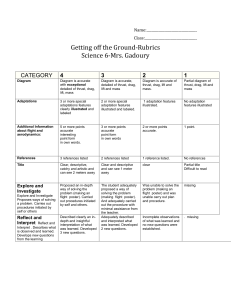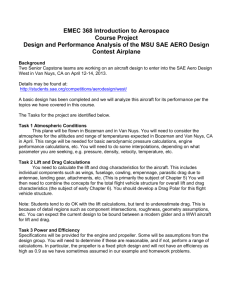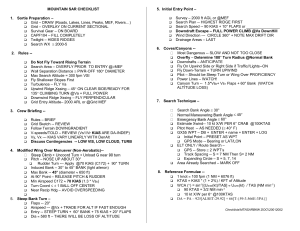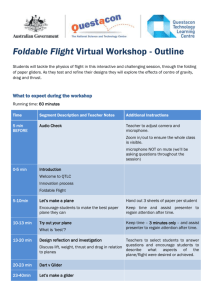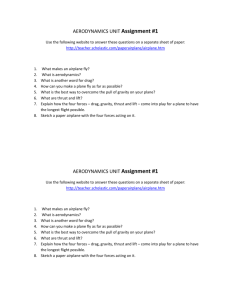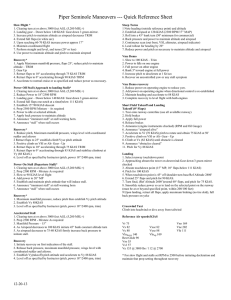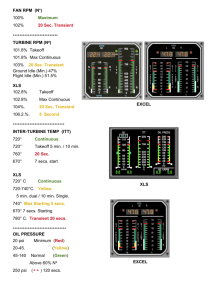FT 256
advertisement
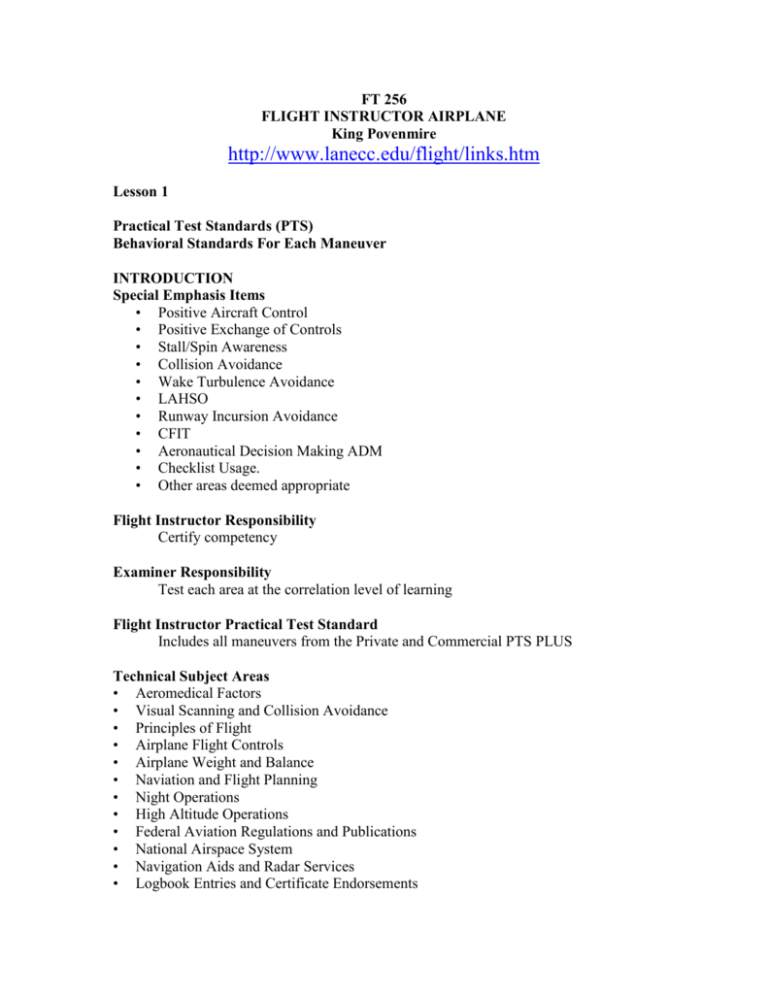
FT 256 FLIGHT INSTRUCTOR AIRPLANE King Povenmire http://www.lanecc.edu/flight/links.htm Lesson 1 Practical Test Standards (PTS) Behavioral Standards For Each Maneuver INTRODUCTION Special Emphasis Items • Positive Aircraft Control • Positive Exchange of Controls • Stall/Spin Awareness • Collision Avoidance • Wake Turbulence Avoidance • LAHSO • Runway Incursion Avoidance • CFIT • Aeronautical Decision Making ADM • Checklist Usage. • Other areas deemed appropriate Flight Instructor Responsibility Certify competency Examiner Responsibility Test each area at the correlation level of learning Flight Instructor Practical Test Standard Includes all maneuvers from the Private and Commercial PTS PLUS Technical Subject Areas • Aeromedical Factors • Visual Scanning and Collision Avoidance • Principles of Flight • Airplane Flight Controls • Airplane Weight and Balance • Naviation and Flight Planning • Night Operations • High Altitude Operations • Federal Aviation Regulations and Publications • National Airspace System • Navigation Aids and Radar Services • Logbook Entries and Certificate Endorsements AERODYNAMICS Flight Instructor Art Terms Axes of the Aircraft Airfoil Terms Four Forces Stability, Maneuverability & Controllability Aerodynamic Efficiency Factors correlated with L/D Max Max Range Best glide Minimum Total Drag Induced Drag and Parasite Drag are equal Specific angle-of-attack for given airfoil. L/D Max Speed is Related to weight L/D ratio is independent of weight Computing L/D Cessna 152 at 60 kts 1.5nm per 1000 ft 9:1 What happens with a 10 kt headwind? 7.5:1 Glide Speeds – Vy vs. Minimum Sink Speed L/D = Horizontal Ft per Min / Vert Spd At 60 kts = 6080 / 675 = 9.1 (10 kt HW = 5066 / 675 = 7.5:1) At 70 kts = 7093 / 800 = 8:1 (10 kt HW = 6080 / 800 = 7.6:1) Min Sink At 53 kts = 5371 / 650 = 8.2:1 Lift and Drag Coefficients See Figure 19 in the supplement Load Factors and Maneuvering Speed √ Load Factor * Stall Speed Maneuvering speed = Stall Speed at 3.8 or 4.4 G √ 4.4 = 2.097 PA28RT201 Vs1 = 58 KIAS 2.097 * 58 KIAS = 121.66 KIAS The same formula works for any stall related speed. Short Field Approach Speed is 74 at 2750 lb What is it at 2200 lb? √ (2200/2750) * 74 KIAS √ .80 * 74 KIAS .894 * 74 KIAS 66.18 KIAS (Handbook value = 67 KIAS) Does this work for Takeoff Speeds? Well, sorta Takeoff is related to AOA And Power/Thrust Available (Check the Arrow speeds – it is pretty close) Stall Speed During a Turn What would be your stall speed if an F-16 which normally stalls at 130 kts while in a 9-G turn? 3 * 130 = 390 kts. How about an Arrow in a 45 bank? √ 1.41 * 58 KIAS 1.18 * 58 = 69 KIAS Climb Performance Vx or Vy? Refer to Figure 27 Vx is determined by max excess thrust Vy is determined by max excess power What’s the difference? 1 – HP = 33,000lb raised 1 ft/min Thrust is a force which changes the velocity of a mass. Measured in lbs, but has no element of time or rate. Ground Effect At less than 1/2 wing span Spanwise flow is changed. Reduces both upwash and downwash Reduces effective angle of attack Reduces induced drag Aerodynamic Pressures – How to determine the “Center of Pressure” Add up all the pressures from each element Lift and Drag How does a wing generate lift Where is the “equal and opposite reaction?” Why don’t the molecules really meet? A new look at Wind Tunnels – What if the air stands still? How does a wing generate lift? Where is the “equal and opposite reaction?” Why don’t the molecules really meet? Balance of Forces When are Lift and Gravity equal? When are Thrust and Drag equal? What happens to straight and level flight when we reduce power (Pitch remains constant)? What happens when we increase pitch only? What happens when we increase power only? Static Stability Negative Static Neutral Static Positive Static Dynamic Stability Negative Dynamic Neutral Dynamic Positive Dynamic V-G Diagram (Figure 17 pg 11) Stall speed at 1-G Stall speed at 3.8-G Stall speed at 0-G How is Va determined? How is Vno determined? High Lift Devices Flaps (fig 23) Slots Slats Flight Instructor Art Airfoil Airplane Turning vectors Show a diagram explaining the equal and opposite reaction to Lift?
